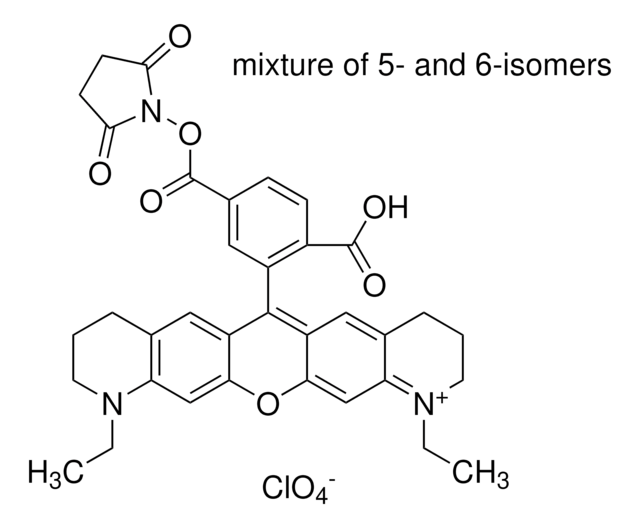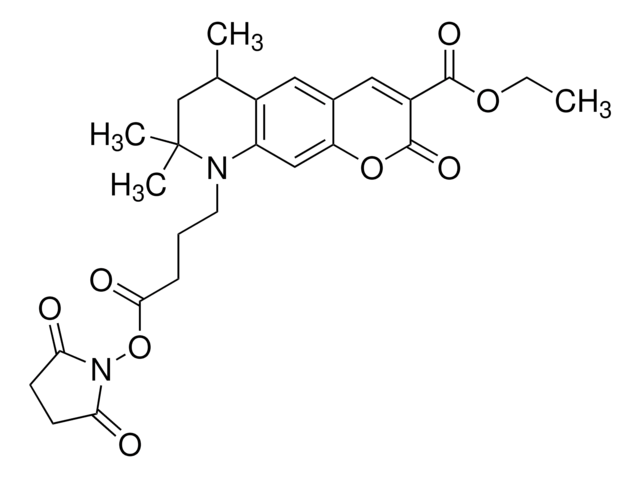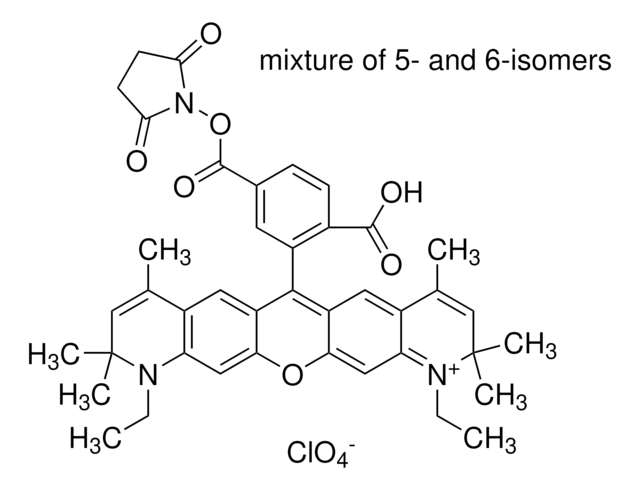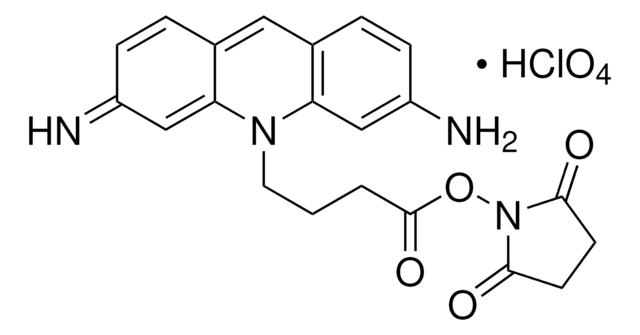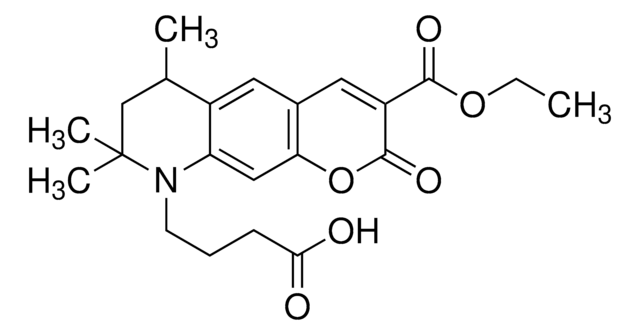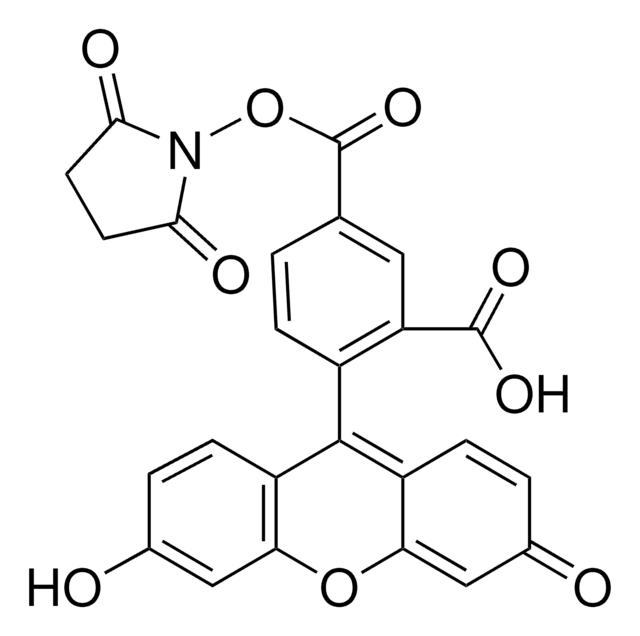00379
Atto 495 NHS ester
BioReagent, suitable for fluorescence, ≥90% (HPLC)
About This Item
Produits recommandés
Gamme de produits
BioReagent
Niveau de qualité
Essai
≥90% (HPLC)
≥90% (degree of coupling)
Fabricant/nom de marque
ATTO-TEC GmbH
Solubilité
DMF: soluble
DMSO: soluble
acetonitrile: soluble
λ
in acetonitrile (with 0.1% acetic acid)
Absorption UV
λ: 496-502 nm Amax
Adéquation
suitable for fluorescence
Température de stockage
−20°C
Chaîne SMILES
[O-]Cl(=O)(=O)=O.CN(C)c1ccc2C=C3C=C\C(C=C3N(CCCC(=O)ON4C(=O)CCC4=O)c2c1)=[N+](\C)C
InChI
1S/C25H29N4O4.ClHO4/c1-26(2)19-9-7-17-14-18-8-10-20(27(3)4)16-22(18)28(21(17)15-19)13-5-6-25(32)33-29-23(30)11-12-24(29)31;2-1(3,4)5/h7-10,14-16H,5-6,11-13H2,1-4H3;(H,2,3,4,5)/q+1;/p-1
Clé InChI
QYNYOHCMTHAQIE-UHFFFAOYSA-M
Application
Autres remarques
Informations légales
Vous ne trouvez pas le bon produit ?
Essayez notre Outil de sélection de produits.
Code de la classe de stockage
11 - Combustible Solids
Classe de danger pour l'eau (WGK)
WGK 3
Point d'éclair (°F)
Not applicable
Point d'éclair (°C)
Not applicable
Équipement de protection individuelle
Eyeshields, Gloves, type N95 (US)
Faites votre choix parmi les versions les plus récentes :
Déjà en possession de ce produit ?
Retrouvez la documentation relative aux produits que vous avez récemment achetés dans la Bibliothèque de documents.
Les clients ont également consulté
Articles
Fluorescent Labeling of Peptides
Fluorescent Labeling of Peptides
Notre équipe de scientifiques dispose d'une expérience dans tous les secteurs de la recherche, notamment en sciences de la vie, science des matériaux, synthèse chimique, chromatographie, analyse et dans de nombreux autres domaines..
Contacter notre Service technique
